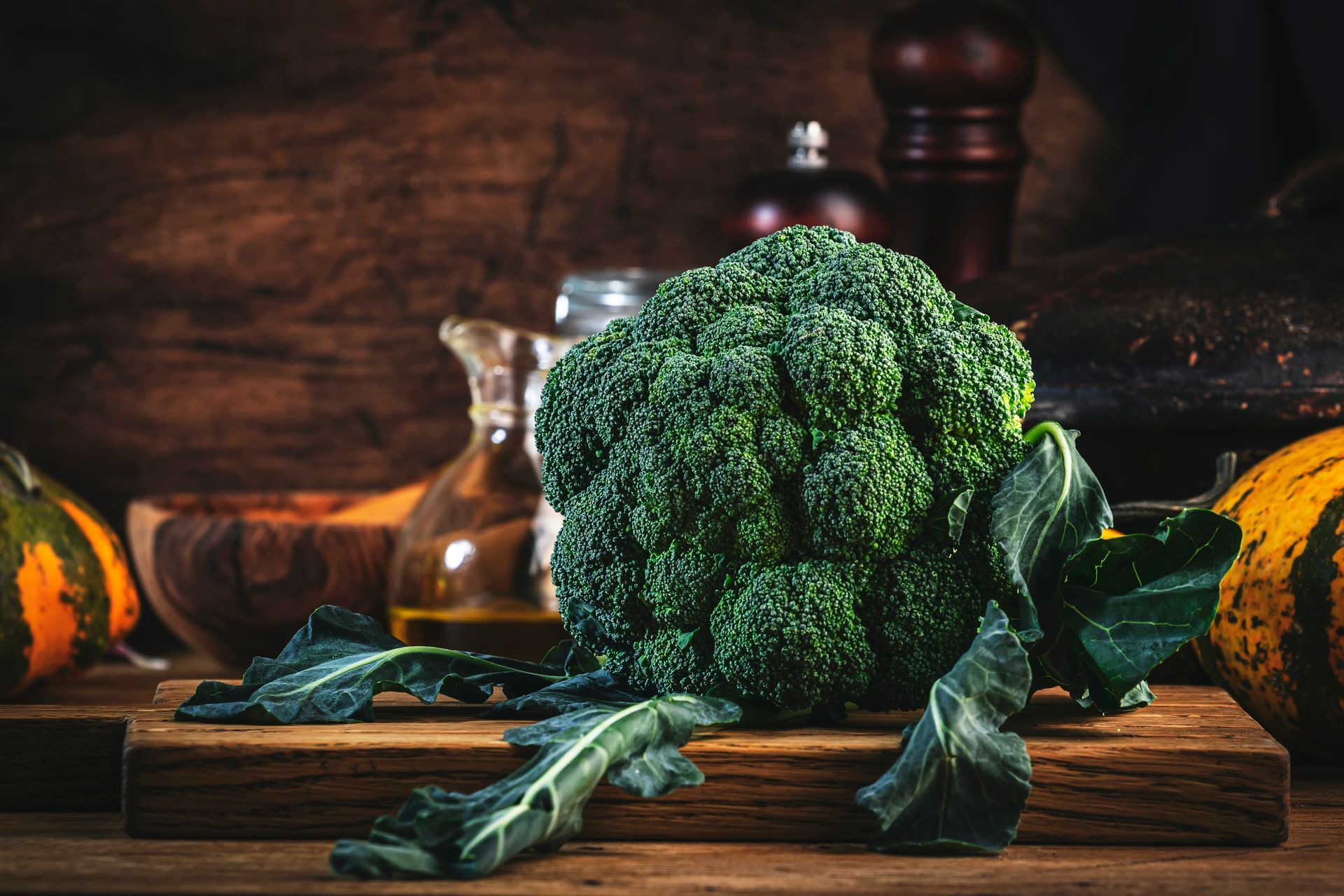Contact Us
We will get back to you as soon as possible
Please try again later
BLOG, PODCAST, & RESEARCH LIBRARY
"Even more impressive, pectin has been linked with a variety of health benefits, including its ability to support detoxification processes, serve as a prebiotic, and assist in managing certain metabolic disorders. Its significance in maintaining overall digestive health while offering protective mechanisms against various diseases highlights the importance of incorporating pectin-rich foods into your diet..."

8 Tasty Foods Rich in Pectin to Boost Your Health
Pectin, a natural form of dietary fiber found in an array of fruits and vegetables, is more than just an ingredient for thickening jams and jellies. This soluble fiber plays a pivotal role in promoting gut health, enhancing digestion, and contributing to a sensation of satiety that can aid in weight management.
Even more impressive, pectin has been linked with a variety of health benefits, including its ability to support detoxification processes, serve as a prebiotic, and assist in managing certain metabolic disorders. Its significance in maintaining overall digestive health while offering protective mechanisms against various diseases highlights the importance of incorporating pectin-rich foods into your diet.
Keep reading to discover not only how to boost your intake of pectin but also how to fortify your health in delicious and innovative ways, opening the door to improved well-being through the power of food.
Pectin vs. Modified Citrus Pectin: What’s the Difference?
There is a big difference between regular, unmodified citrus pectin and Modified Citrus Pectin, the star ingredient in ecoNugenics PectaSol.
What Is Pectin?
Regular pectin is a fiber that offers multiple gut and colon health benefits. However, unmodified pectin molecules are too large to absorb into the circulation from the digestive tract.
What Is Modified Citrus Pectin?
Modified Citrus Pectin is produced through a proprietary enzymatic process, starting with regular citrus pectin and shortening its molecules to achieve the correct size and structure required for clinical efficacy. Not all Modified Citrus Pectin products are the same; PectaSol is unique in its ability to successfully halt the actions of "rogue protein" galectin-3 (Gal-3).
PectaSol
Formulated by Integrative Medicine expert Isaac Eliaz, MD, PectaSol is clinically proven and backed by over 85 studies and 6 patents. It has been recommended by thousands of doctors for 30 years to support inflammation responses, immune health, and detoxification.
8 Foods Rich in Pectin + Health Benefits
1. Apples
Apples, particularly rich in apple pectin, offer numerous health benefits that can enhance well-being significantly. Apple pectin is instrumental in promoting heart health by lowering cholesterol and blood pressure levels. It also helps regulate blood sugar, which is beneficial for managing conditions like type 2 diabetes. The fiber in apples aids weight management by slowing stomach emptying and increasing feelings of fullness. Additionally, apple pectin supports digestive health by serving as a prebiotic and alleviates symptoms of both diarrhea and constipation.
How to Include Apples in Your Diet
Consuming whole apples, especially varieties like Granny Smith, provides a natural source of this valuable fiber. They can be enjoyed fresh, baked, or added to salads and smoothies. Apple pectin supplements are also available for boosting fiber intake. Consider using the peels and cores of apples to create homemade apple pectin stock, which can be used in preserves.
2. Citrus Fruits
Citrus fruits like oranges, grapefruits, lemons, and limes are rich in pectin, primarily concentrated in the peels and pips. Grapefruits have the highest pectin yield among citrus fruits. Citrus pectin acts as a prebiotic, promotes gut health, aids detoxification by binding to toxins, and helps regulate blood sugar and cholesterol levels.
3. Carrots
Carrots are a powerhouse of nutrients, offering a blend of vitamins and minerals alongside soluble and insoluble fibers. The soluble fiber in carrots, mainly pectin, helps regulate blood sugar and cholesterol levels, supporting cardiovascular health. Eating raw carrots in salads, or cooking them to enhance beta-carotene absorption, are excellent ways to incorporate them into your diet.
4. Beans
All varieties of beans, from fresh haricots verts to dried kidney beans, are notable for their pectin content. Beans provide significant health benefits due to their high fiber content, including lowering cholesterol and regulating blood sugar levels. The pectin in beans also promotes the growth of beneficial gut bacteria and supports digestive health.
5. Bananas
Bananas, particularly the peels, are an excellent source of pectin, especially when unripe. Pectin in bananas aids digestion, maintains a healthy gut by acting as a prebiotic, and helps regulate blood sugar and cholesterol levels. The resistant starch found in unripe bananas contributes to weight management and enhances insulin sensitivity.
6. Peaches
Peaches are rich in dietary fiber, including pectin, which plays a role as a hydrating agent. Making homemade peach preserves is an excellent way to enjoy peaches while maximizing their pectin content. Using ripe, organic peaches ensures the highest quality and nutritional value.
7. Tomatoes
Tomatoes are rich in pectin, especially when the skins and seeds are included. The pectin in tomatoes helps thicken jams and sauces naturally. Rich in antioxidants, tomatoes offer significant health benefits, including reducing the risk of chronic non-communicable diseases. Tomato jam is a unique way to enjoy tomatoes' pectin content in a flavorful spread.
8. Raspberries
Raspberries are a fantastic source of pectin, which significantly enhances digestive health by promoting the growth of beneficial gut bacteria. Pectin in raspberries also helps maintain healthy cholesterol levels and stabilizes blood sugar. Making raspberry jam is a delightful way to enjoy these health benefits, whether through traditional cooked methods or vibrant freezer jams.
Stay Healthy by Eating These Foods Rich in Pectin
Including pectin-rich foods like apples, citrus fruits, carrots, beans, bananas, peaches, tomatoes, and raspberries in your diet offers extensive health benefits. These foods aid digestion, promote gut health, support weight management, and reduce the risk of various diseases. By understanding the role of pectin and incorporating these whole foods, you can make informed choices that significantly impact overall well-being.
Encouraging a deeper integration of pectin-rich foods into daily eating habits is a practical approach to improving health and preventing disease. Simple dietary adjustments, such as incorporating apples or beans, can have profound effects on health. Moving forward, explore the vast potential of these foods for a healthier, more vibrant life.
FAQs
What are some common sources of pectin in our diet?
Pectin is predominantly found in apples, carrots, oranges, grapefruits, and lemons. Citrus fruits are noted for having the highest pectin content.
Which fruits and vegetables have the highest pectin levels?
Apples, citrus fruits, peaches, apricots, carrots, tomatoes, and potatoes are high in pectin. Peas also have a high concentration of pectin among legumes.
Are there any adverse effects associated with pectin consumption?
Pectin can cause side effects like diarrhea, gas, and loose stools, especially when taken alongside guar gum and insoluble fiber.
How does pectin impact human health?
Pectin helps slow gastric emptying, enhances bowel function, reduces glucose and cholesterol absorption, and increases fecal mass, improving waste elimination.
---
To read the original blog on ECOnugenics's website, please visit: https://econugenics.com/blogs/news/8-tasty-foods-rich-in-pectin-to-boost-your-health










